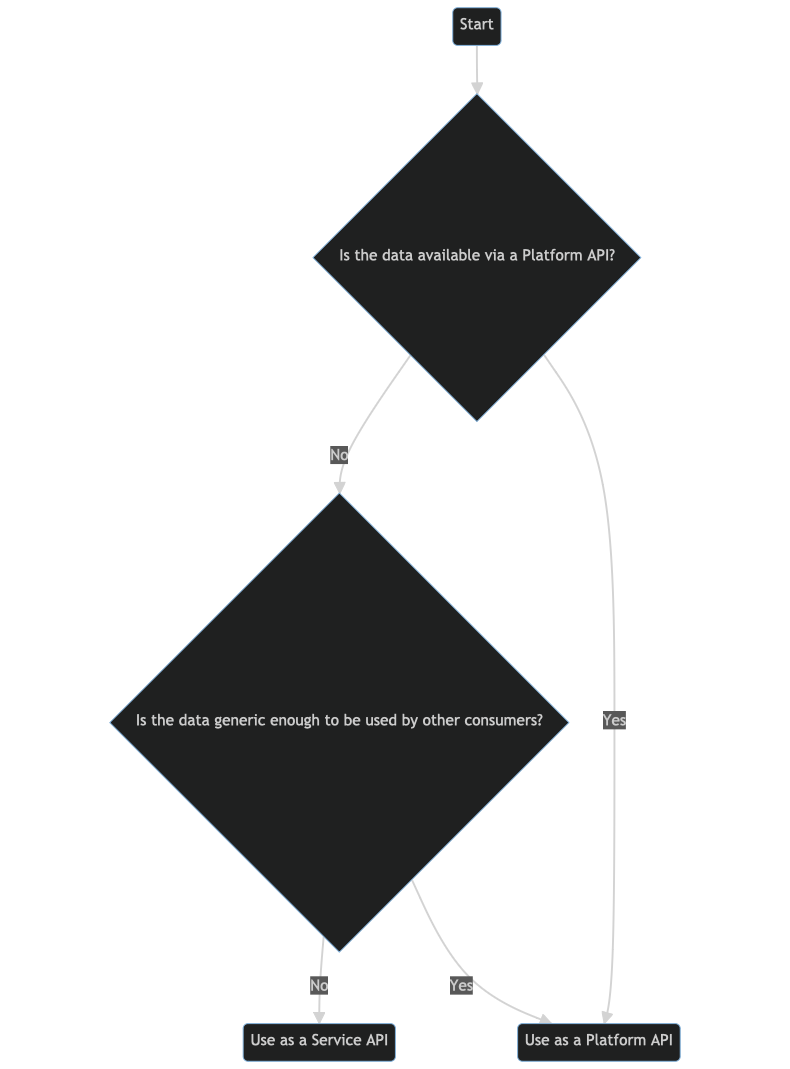Integration platforms play a crucial role in connecting different systems and are often discussed in API-related contexts. Before delving into integration platforms, it’s essential to address the classification of APIs, which helps determine their value within an API platform. There are two primary levels of API classification:
- Platform APIs: These APIs are located close to the data layer and can be part of the platform itself. They primarily handle reading and writing data streams but don’t involve business logic for data processing.
- Service APIs: These APIs are specifically designed to handle business logic and cater to specialised use cases. They interact with the platform APIs and provide additional functionality or data processing capabilities.
Platform APIs are consumed by service APIs, creating a specific relationship between the two. To determine the type of API being considered, a decision tree can be utilised.

Now, let’s explore the concept of integration platforms. Integration platforms aim to connect disparate systems and consist of middleware that addresses two key scenarios: application integration and data integration.
Application integration involves the distribution of data and information between applications. This area is often described using “Enterprise Integration Patterns” found in literature. On the other hand, data integration focuses on distributing data across various data stores, typically databases.
It’s important to understand the term “platform” within this context. An integration platform combines both application integration and data integration scenarios to make them accessible and usable for developers, who are the customers in this context.
Up to this point, no specific technologies or products have been mentioned intentionally. In a previous story titled “Not all APIs have to be Rest(ful)” I introduced the API Interaction Patterns to guide technology selection without delving into implementation details. In line with the classified APIs, an architecture can be designed that resembles traditional application integration from the consumer side. However, it initiates at a deeper level with data integration by providing specific database views. These views can then be elevated to the application integration level using a message/event broker.
In terms of platform APIs, they can be viewed as events offered through the integration platform in the form of APIs. Service APIs can access these platform APIs to provide relevant information or data to consumers. It’s worth noting that service APIs are not necessarily part of the integration platform itself. This theoretical example demonstrates that an integration platform is a vital component of a comprehensive API platform, enabling the creation of value for an organisation.
To conclude, integration is not an isolated process but a part of a broader framework that encompasses platforms. It involves both application-level communication and data-level integration. Recognising the significance of the data perspective in integration projects is crucial. Just like APIs, integration projects require substantial effort and consideration to build a successful API platform.

